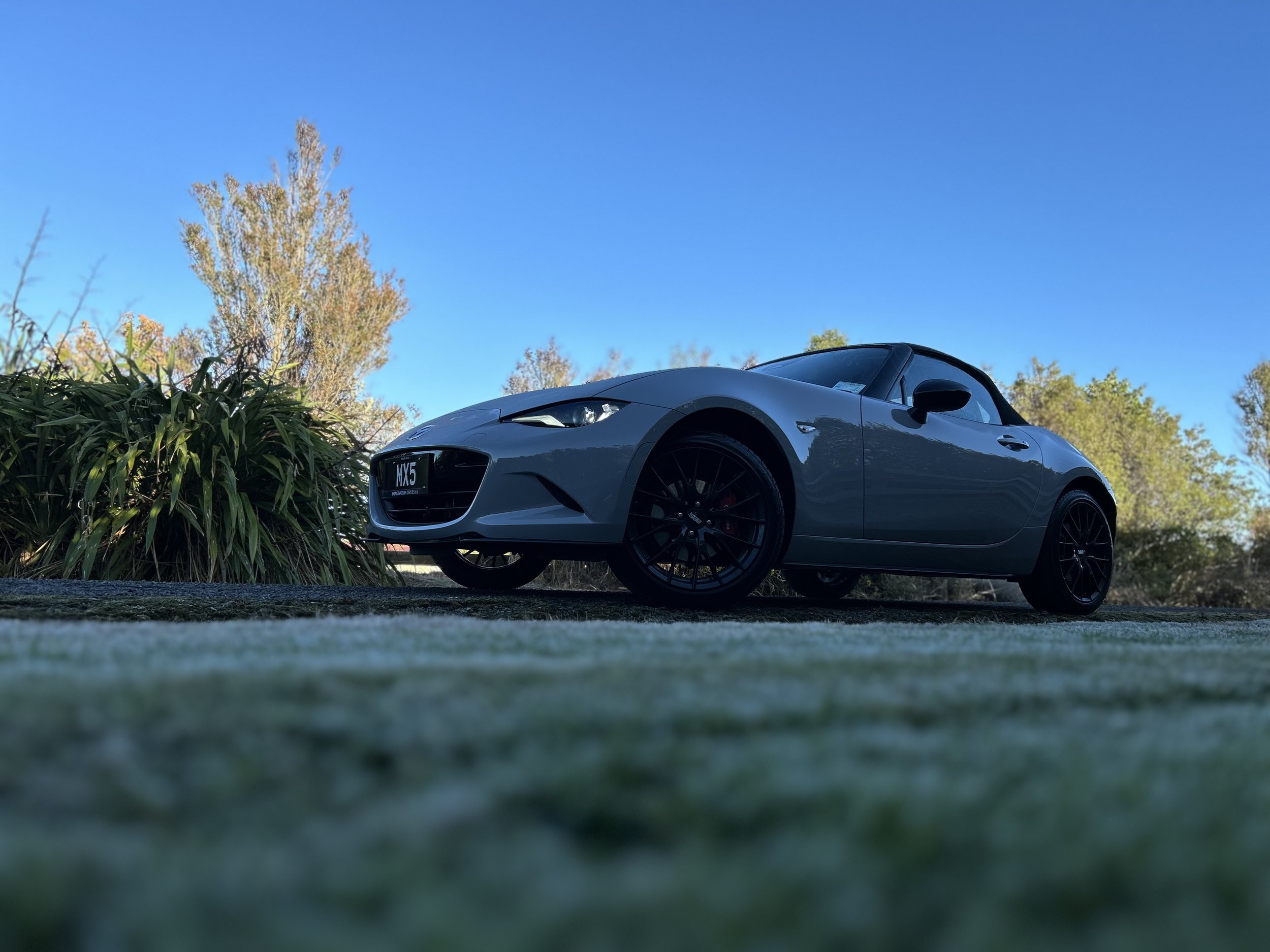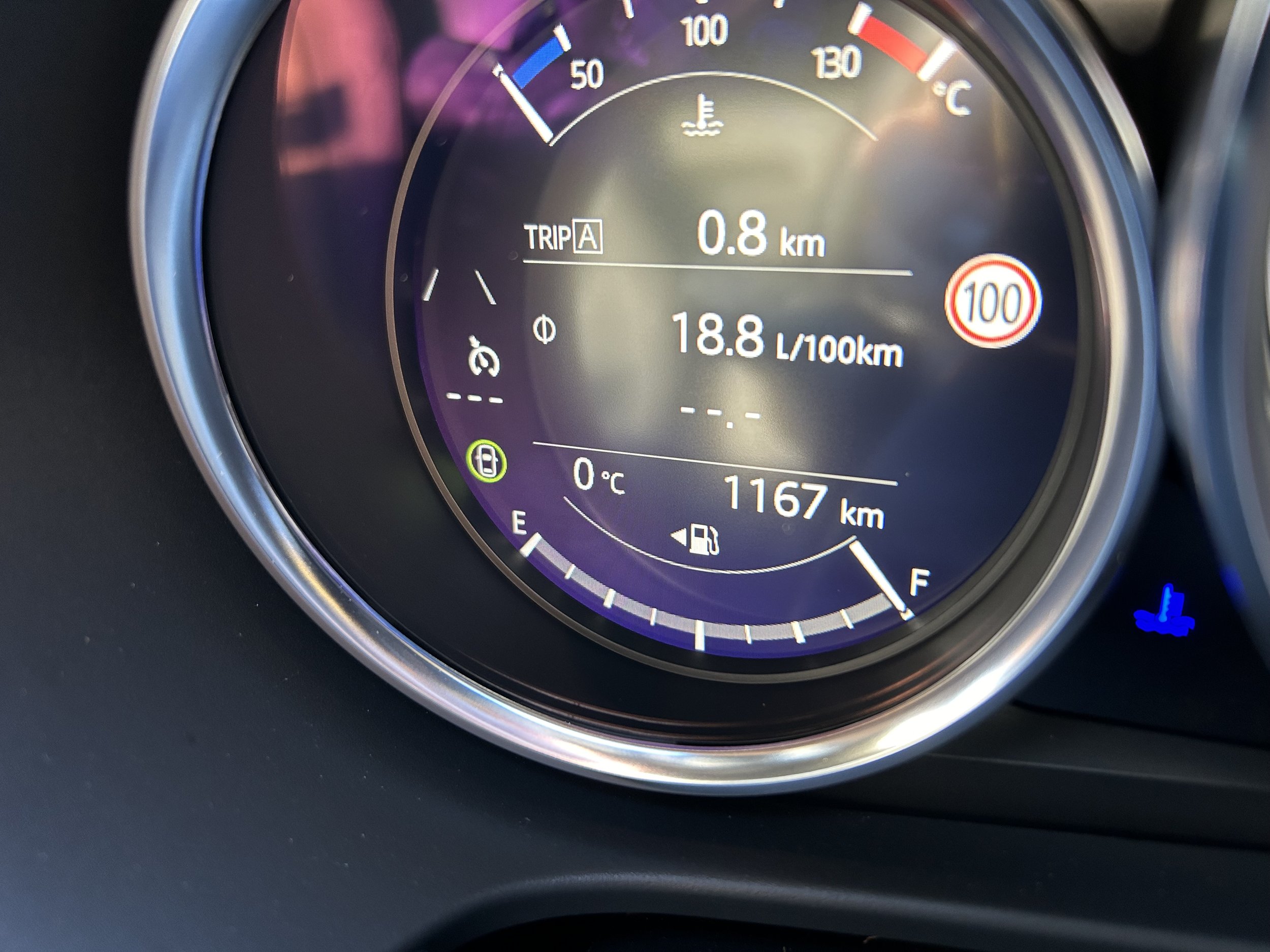Mazda MX-5 GT road test review: Tracking true
/Another year, another round of tweaks - including a circuit mode. Great becomes greater.
Price: $60,490.
Powertrain: 2.0-litre four-cylinder VVT petrol, 135kW/205Nm; six speed manual, rear-wheel-drive.
Wheels and tyres: Alloy wheels, 205/45 R17.
Dimensions: Length, 3915mm; width, 1735mm; height, 1230mm.
We like: Getting older, yet still hasn’t grown up; slight price lift doesn’t degrade best bang-for-buck status.
Don’t like: Insipid exhaust note.
CIRCUITS are a happy place for the world’s most perfect affordable roadster.
Every generation of Mazda MX-5 has hit the track. In addition to lots of national championships in big global markets, the factory even backs an annual race for media teams, in Japan.
I’ve done my bit, with six seasons in New Zealand’s heartily grass roots series that, to keep costs low and to engender club level involvement, is purely for the first born 1989-1997 1.6-litre NA. An old car now, unwearied by age, standing testimony to good design and solid engineering. Every year more cars include.
I feel confident in betting there wouldn’t be a weekend somewhere in the world when either cars kitted out like mine - with a race number, roll cage, race suspension and brakes - are doing battle or at least are running at road car-suited track days.
And why not? The guiding development principle for the type, Jinba-ittai, demands high intensity involvement. It translates as “the feeling of oneness between driver and car”. If you’re in the manual roadster, mission utterly accomplished. This is such a rewarding joy.
Yes, even after all this time. The current ND version is in its 10th year; the longest production run for any MX-5, and it seems to have a couple more to go.
What’s kept it in vogue? First, it’s one of those cars that just doesn’t look remotely as old as it is. The design has proven to be incredibly resilient. If anything, the blend of angularity and swoop is more in vogue now.
Also endearing that it remains reliable and easily comprehended. Its tech has never really been ground-breaking, but its simplicity has made it affordable, easy to maintain and thus, not at all intimidating to own.
The other key to keeping up interest, if now from just a small band of loyalists? Carefully considered updates.
As much as Mazda understands it has a legend on its hands and has no intention of being wholly reckless with its reputation, it also has never been shy to tinker.
So, every year, for the past couple, the ND has been tweaked. Just a touch. It’s wrong to categorise the work effected as improvements. They’re more accurately flavour enhancements. This, after all, is a car that reached perfection a long time ago.
Adjustments to the core 2024 manual roadster start with styling amendment. Did you even realise? This car has always looked great and, basically, you need to be a trainspotter to pick the alterations now.
To avert cognoscenti quibbling, the revisions are to the light clusters, which are now all-in-one LED units at the front (previously, the LED daytime running lamps were separate and lived in those outer air intakes low down in the front bumper) while the rears have a more defined ring-like detail in them. That, and the test car’s smart new body colour (Aero Grey metallic really suits it) plus a fresh design of 17-inch BBS alloy wheel - this is the second ND with those - are it. All minor stuff and, you can bet Hiroshima’s people ached over every detail.
Working on what’s gone on in the cabin is equally something of a ‘spot the difference’ game.
The most pleasing amendment is that the old 7.0-inch infotainment system, which was looking very dated, has finally been replaced by a 8.8-inch affair.
The new has the latest software and interfaces and, though still worked by a rotary controller down on the transmission tunnel, the screen is also properly touch affected now. Beyond this, the instrument cluster gains some new graphics to keep things fresh and the seat covering material is grippier. There are USB-C ports, which are still useful because even though Android Auto and Apple CarPlay supposedly now connect wirelessly, they wouldn’t for me. Tethering did the trick for my iPhone.
All nice things, but just minor embellishments. You don’t buy an MX-5 to enjoy the stereo or even the looks from others. You buy it to drive it.
Therefore, I see the most relevant tweak as one felt, rather than seen, and will most appreciated by circuit addicts.
It’s taken until this year for the manual roadster to get a feature some performance thoroughbreds have from day dot - a specific track driving mode.
Pushing a wee button tucked unobtrusively away low of the right side of the steering wheel relaxes the dynamic stability control to point - Mazda assures - it will lend opportunity to achieve even more from this car’s fabled chassis balance and to get on the throttle a bit earlier and with greater vigour.
So, you can see how this story pans out, right? Guy who has been racing an MX-5 most latterly at Timaru, Teretonga, Ruapuna and Manfeild over late summer for the national MX-5 Heritage Cup takes the new model to his local circuit and discovers it’s now as good as his own cherished circuit plaything.
If only. In truth, the car did get to my local track, but only so far as the pits out back, and this because I’d dropped by to catch up with a mate, Guy, who also races an NA and was taking part in a track day, in his NC road car. I couldn’t join him in Mazda NZ’s car, because press loans expressly prohibit circuit driving. For reasonable grounds. One being, there’s no insurance.
Of course, that didn’t mean I couldn’t trouble the feature on the open road. And there, yes, you can feel some effect. But there’s also sense the setting is properly-named. Another time, hopefully.
Last year’s alteration was introduction of Kinematic Posture Control (KPC); basically torque vectoring by braking, with the intention of achieving the same effect for rear-drive cars that Mazda's proprietary G-Vectoring Control Plus (GVC Plus) does for front-drive.
I thought then it made the car feel more lively, albeit also more darty, from subtle tendency for it to drag down the speed on the inside rear. You understood why it was doing it, but it did feel a bit weird.
With this year’s car comes a further fix to settle it back down a touch. The inclusion of asymmetric limited-slip differential, the make says, should help quell some of the pre-update car’s tendency to oversteer if pushed too enthusiastically into corners. It seems to.
Other changes? A slightly altered tune for the Bilstein-damped suspension that also came out in 2022 and a revised design of front strut brace. Mazda also mentions the lightweight BBS rims, but last year’s car also had those.
Hard to say how much incrementally better it has become. Easy to say it’s as much fun as ever. A morning that saw driving kick in at minus one - no worries, it has a good heater, heated seats and that’s why I have a good jacket and beanie - was joyous.
The car nipped and tucked carefree and capably on a rural expedition taking a route used just weeks before for the local MX-5 owner’s club outing. I was accompanied by Guy, whose other role in MX-5-dom is local club convenor, who reckoned this one was more composed and confidence inspiring than his own little gem had been on the members’ day.
It wasn’t just the chill of the day that kept it cool. One thing about MX-5s is that, even when they are red, they just don’t feel massively taxed. That comes down to the lightness. Not having many kilos to cart - in this case, the car’s a smidge over a tonne - doesn’t only reward the responsiveness and the feeling of control, but also means there’s basically no strain on consumables like tyres and brakes.
Sure, the engine does work up a sweat. But that’s because MX-5 engines have never been over-endowed with muscle. The idea is that you’re supposed to work the whole car, not just rely on point and squirt muscle, to effect speed. With this car, the rev limiter is basically a go-to for maximum fun. Don’t be afraid. It loves to rev.
By ‘it’, I mean the 2.0-litre petrol four . The MX-5 used to also offer with a 1.5, but that’s been quietly shelved here as it didn’t really draw attention. The small capacity unit was remarkably zesty and under-estimated, but bigger bore engine is not going to called out.
Sure, MX-5s can never stand accused of being over-powered, but rarely do they feel lacking. This one has a sweet, free-revving nature and more than enough eagerness, so long as you do the right thing and don’t get lazy with the beautifully precise, snicky six-speed manual.
They’ve screwed one thing up. The ND' in previous form was never loud, but there was an emergent barp to its exhaust. That’s gone. Rather than treat the car to a rortier note all can hear, Mazda has instead gone the way of many and implemented a ISE (Induction Sound Enhancer) that, it says, feeds the car’s sporty note more into the cabin than into the general environment. That’s just wrong, in my book. As I say, the MX-5 has never been loutish loud, but to make it quieter in the streetscape is criminal.
Being so small isn’t. With the MX-5, lightness as much as simplicity counts for everything. If you don’t like that the boost has 130 litres’ capacity and that the cabin is very cosy and lacking in oddment space (no door pockets, no integrated cupholders, no glovebox), to point that the best place - even though it’s awkward to reach into when driving - to put your sunglasses is the cubby behind your left shoulder? Then don’t buy it.
The roadster is less snug that the alternate metal-topped RF, which still continues but in automatic (so, not the same car to my purist ideology), when they both run roof up.
Advice to any roadster owners is to drive it al fresco at all opportunities, regardless of air temperature (it’s go a great heater). Insofar as precipitation is concerned, light rain can be withstood. Snow? Pah. I’ve seen video of this car being driven top down in upper Scandinavia.
I’m at the top end of the driver size consideration (1.8 metres’ tall and a bit heavyset) so the top of my head feels the slipstream and the chair is set back as far as it will go. But the driving position is great (yes, reach adjustable steering is a blessing) and I’d never admit to discomfort.
That there’s more of a purity to the MX-5 than there is with many cars is something to celebrate, not least right now. It’s pretty obvious the world’s best selling roadster could be one of the last of its kind.
Already this charmer has led a charmed life; regardless it is one of the world’s most popular sports cars, with more than one million built, it’s only Mazda’s sheer blood mindedness that keeps the nameplate in production for an astounding 35 years. It hasn’t made a profit for years.
The ND is a full circle car; eons ahead of the original in its design and engineering, yet it so much alike it in character and credo. While there’s a fuel around to feed it, Mazda should never stop building this car.






















